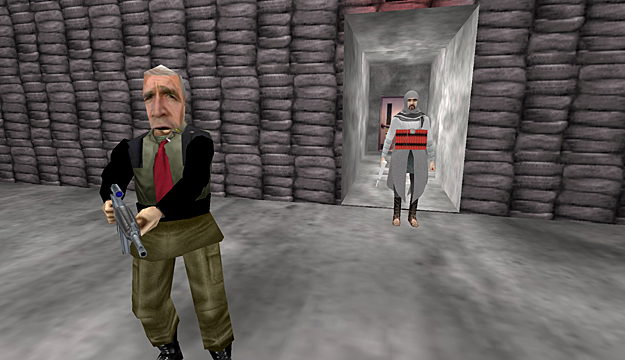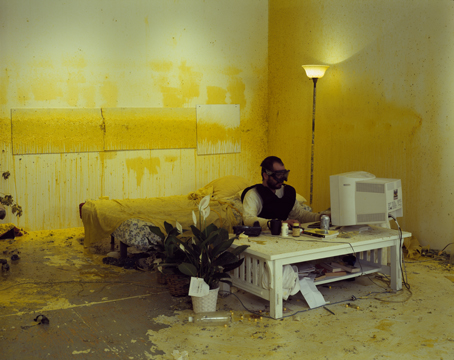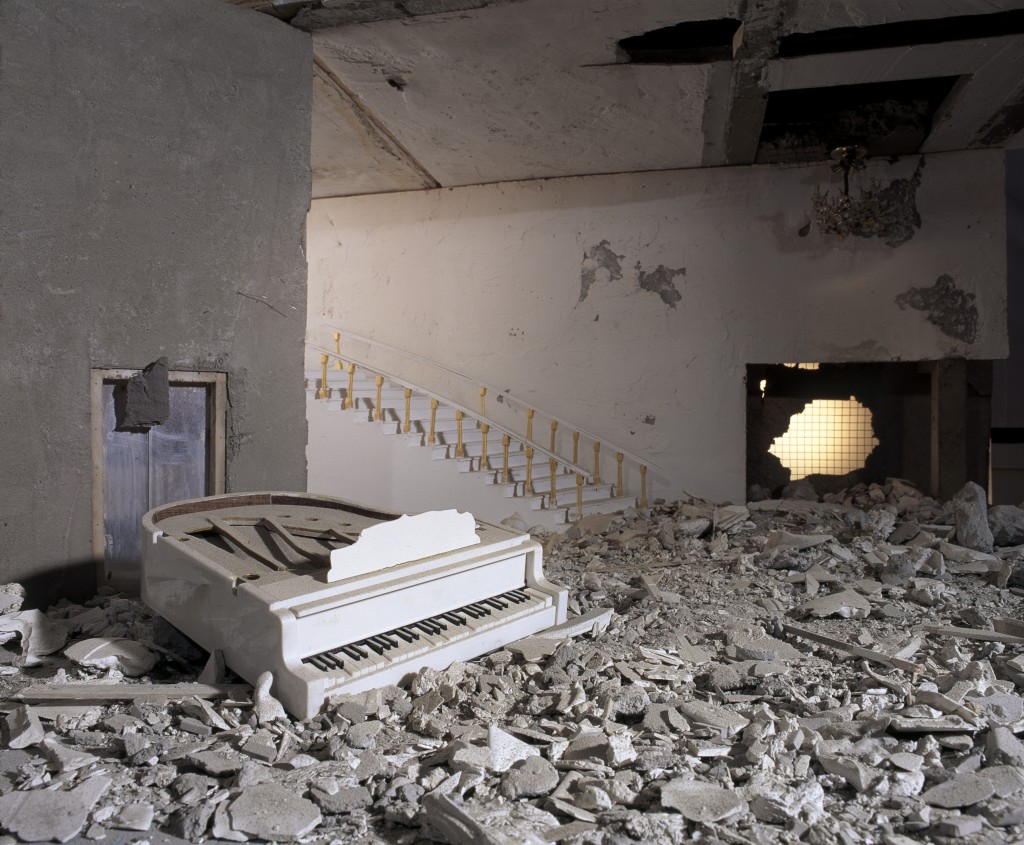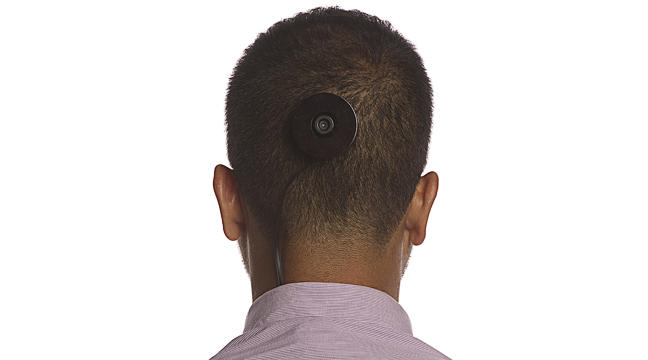Wafaa Bilal is a New York-based Iraqi artist, working with mixed media from installations to photography and digital arts. His project Virtual Jihadi (2008) recreated first person shooters that the US army used to train their staff. He talks to Ruya about his days as a student in Baghdad, life as an artist in New York, and his most recent projects. He unveils his latest piece, Canto III at the Armory Show, New York, 5-8 March 2015.
You were born in Iraq, what made you move to Kuwait, and later Saudi Arabia? I didn’t really “move” to Kuwait, I was actually on the run. I was in Baghdad as a student when the invasion of Kuwait took place. As kids we were quite idealistic, and we opposed the war, which got us into trouble. I was 25, and I spent maybe 40 days in an interim camp in Kuwait before I was transferred to Saudi Arabia.
So you had to leave? Yes exactly.
Where you there with your family? No, I was alone.
What did you do to oppose the war? Did you speak out, did you demonstrate? We didn’t demonstrate, we spoke out. This was major at the time. The regime asked us to volunteer for the army. They came to our schools and we publicly refused to do so. We knew our days were numbered then in Baghdad.
What made you want to become an artist? I think this has been a long childhood dream, and has something to do with Kufa, the city I was born in. It is a very creative city in terms of art and poetry. As a kid, I copied images from magazines. My dad was a teacher and ran the school library, he would take me there and I would just draw, copying images from anything I could – magazines, books …
What was the most memorable of these art works? When I was 13 I got hold of a poster of Jesus Christ as a Shepherd. I copied it using oil paints for the first time and this was a turning point for me. I started painting more regularly, initially reproducing images of Western art, then going on to do my own work.
You studied Geology and Geography. Why didn’t you go straight to art school? I couldn’t go to art school because of the political environment. I also had to study to avoid going to the army. I enrolled in a Geography and Geology course at the University of Baghdad, and continued to make art during my studies.
What kind of work were you doing then? First I took photographs of the streets of Baghdad, and tried to reflect daily life in the city. I was drawn to the poverty and fascinated by how run down parts of the inner city were. I was portraying the wrong side of society, and I got into trouble with the regime. Then my work became more abstract. A lot of painters did this to conceal the ideas behind their art.
Did you have exhibitions as a student? I displayed my work on the grounds of the University of Baghdad, outside the School of Literature. At the time, every University had their own studio which supplied materials and supported our exhibitions.
What happened after you left Iraq? After running away from Iraq, and spending two years in refugee camps, I moved to the States. I studied Fine Art at the University of New Mexico. I won an award for my first interactive work, The Absynthe Drinker, which was part of a show called Millenium in Santa Fe. Being among the youngest recipients of this award, I was encouraged to pursue interactive art. I moved to the University of Chicago, to do a Master’s degree in Art and Technology.
Was that easy? Nothing is easy. There were so many challenges such as the language barrier and money. When I arrived in the States, I worked in a jewellery factory. Then I became a carpenter before enrolling at the art school in New Mexico.
What inspired the Ashes Series (2013)? When the invasion in 2003 took place, I was devastated and felt compelled to be close to home. I started collecting images of Iraq destroyed, not knowing what to do with them. I built them in miniature scales, and took pictures of the models. This helped me feel closer to home, not just emotionally but somehow physically. The space I created became a mediatory for the two zones I was in. I also wanted people viewing the works from their comfort zone to connect with what is happening in Iraq – photography is a good medium for this.
What themes do you deal with in your work and why are they important? An artist’s work is the reflection of an inner dialogue. Iraq has always been at the centre of my work as well as social justice in Iraq, the US and other countries.
How have audiences in America responded to your work? Audiences have reacted very strongly to my work, whether they oppose or support it. Art should raise questions that inspire people and get them out of their comfort zone. My project Shoot an Iraqi was very well received, many people admired it and studied it. However, many hated my project The Third I, because it really challenged their comfort zone. Our job as artists is to criticize and agitate – not just make people happy.
How often do you collaborate with other artists? Last summer, I worked with the Nadar Ensemble, a Belgian group, on Dead Serious, a performance in Dermstadt, Southern Germany. Through music and performance, we examine the devastation of drone and unmanned war in Iraq and other countries. We also engage with the audience on multiple levels, not just about drones but about social connections, such as music and art. It’s a very unconventional way to connect with audiences about the remote wars.
Dead Serious from Binary Artists on Vimeo.
What made you focus on drones? Are there any echoes with the first Gulf war? I lost a brother a few years ago to a drone attack, so you can imagine my feelings against this inhumane treatment towards another culture. In the first Gulf war of 1991, it was bombardments, not drones that were heavily used. There were no troops on the ground, and for the first time, soldiers were disconnected from the war zone. Remote work continued to evolve and further remove the soldier’s experience from what is happening on the ground. Unfortunately this means more devastation on the ground, with a greater emotional and physical distance for the soldiers.
Where is home for you? Home is the place where we mentally reside. It will always be where I grew up, Kufa, and the second city I lived in, New York. Some of my family are in Baghdad, but most are in Kufa and Najaf. I have one brother who lives in the USA, he is a businessman.
Favorite place in New York? The River Front, because of the open air. I like to sit and read in the Hudson River Park. I also love Central Park.
What artwork would you make about New York? It would be about the craziness of the city. It does not give you any break.
And about Kufa? It would be about the river – that’s my favourite spot there too. I remember going there on a daily basis either to paint the bridge, or to sit down and read a book. I like the evening breeze as well. People often went there to have a cup of tea and play dominoes.




